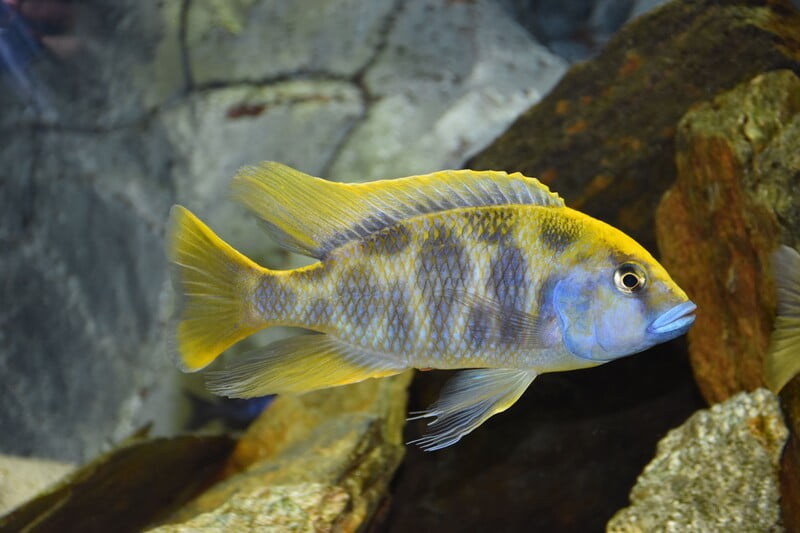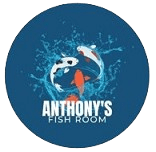
Nimboschromis Venustus
The Nimbochromis venustus, commonly known as the Venustus cichlid or Giraffe cichlid, is a species of freshwater fish belonging to the Cichlidae family. These cichlids are native to Lake Malawi in East Africa, where they inhabit rocky shorelines and open waters. The scientific name "Nimbochromis" is derived from the Latin words "nimbus," meaning cloud, and "chromis," meaning color, indicating the colorful nature of these fish.
Here are some key characteristics and information about Nimboschromis venustus:
Appearance: Venustus cichlids are known for their striking and distinctive appearance. They have a sleek, elongated body with a pointed snout. The males are more colorful than females, displaying a vibrant blue coloration on their bodies with yellow accents. The name "Giraffe cichlid" is attributed to their pattern, which resembles the spots on a giraffe.
Size: These cichlids can grow to a considerable size, with males reaching lengths of around 10 to 12 inches (25 to 30 cm) and females being slightly smaller.
Habitat: In their natural habitat of Lake Malawi, Venustus cichlids are commonly found near rocky areas. They prefer habitats with plenty of hiding spots and crevices among the rocks.
Behavior: Like many cichlids, Nimboschromis venustus can be territorial, especially during the breeding season. They are known to form territories among the rocks and defend these areas against intruders.
Diet: In the wild, their diet consists of small fish and invertebrates. In captivity, they can be fed a diet of high-quality cichlid pellets, flakes, and occasional live or frozen foods.
Aquarium Care: Keeping Venustus cichlids in captivity requires a spacious aquarium with plenty of hiding spots, rocks, and caves. Water parameters should be kept stable, with a pH range of 7.5 to 8.5 and a temperature range of 75 to 82 degrees Fahrenheit (24 to 28 degrees Celsius).
Breeding: Venustus cichlids are maternal mouthbrooders. After spawning, the female will carry the fertilized eggs in her mouth until they hatch into fry. The fry can be raised on specialized fry foods or finely crushed flakes.
It's important to note that keeping cichlids, including Nimboschromis venustus, requires careful attention to their specific needs and behaviors. Understanding their natural habitat and providing a suitable environment is crucial for their health and well-being in captivity.



